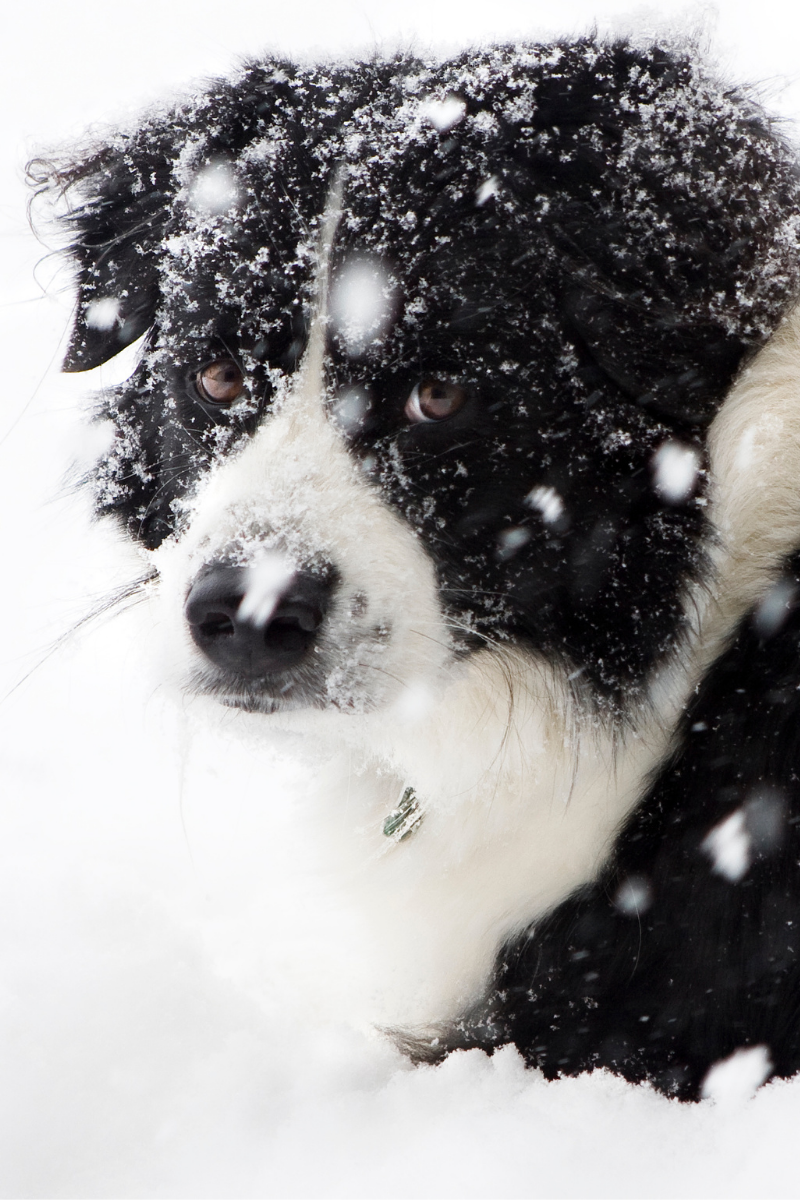Why you shouldn’t let your dog sleep outside this winter

Canadian winters are notorious for being brutally cold, regardless of what part of the country you live in. You don’t want to spend time outside when it’s so cold the air hurts your face, and it’s highly likely your dog doesn’t want to either. Even dogs like huskies who are known for living in cold, snowy weather need proper indoor shelter during the winter months. Here are some reasons why your dog should not sleep outside this winter.
Just like humans, dogs can get frostbite or become hypothermic if they’re out in the frigid cold for too long. Very young and very old dogs are the most at risk for these serious conditions from the cold, along with those with short hair.
Frostbite happens when skin, typically exposed, is damaged in cold weather. It can cause damage from the top layer of skin all the way down to the bone in serious cases. In dogs, signs of frostbite include skin that appears blue, pain in the affected area, and feeling cold and brittle to the touch.
Their paws, tail, and ears are most prone to frostbite. Frostbite requires immediate attention from a veterinarian. Though most cases are mild and can be fully recovered from, frostbite to large areas can be life-threatening. If your dog shows signs of frostbite on its extremities, call your vet immediately. On the way to the vet’s, wrap the affected area in a warm (but not hot) towel to start rewarming the tissue.
Hypothermia is another condition caused by prolonged exposure to cold conditions. Being exposed to cold conditions for extended periods of time causes the internal body temperatures of humans and dogs alike to fall. Symptoms include pale skin and lots of shivering. Lethargy and listlessness are serious symptoms.
If you suspect your dog is hypothermic, it is crucial you call your vet right away. Left untreated, hypothermia can quickly become fatal. While you are on your way to the vet’s, wrap your dog in warmed (but not hot) blankets or towels, just like you would to an area affected by frostbite. A hot water bottle is also helpful, but should be wrapped in a towel before placed near you dog to prevent possibly burning their skin.
The best way to prevent these serious conditions is to minimize the amount of time your dog spends outside on cold days, especially those with extreme cold warnings. Coats and boots will help keep your pet warm while out for short winter walks. Boots also help your protect your dog’s paws from the salt on sidewalks. Coats or sweaters should be put on puppies, short-haired dogs, and senior dogs even when just going outside to relieve themselves to prevent them from becoming too cold.
It is much safer for your pet to sleep indoors during the winter. Adequate shelter is required under Canadian law, and leaving your pet out in the cold can result in fines or jail time. Your pet will also be much happier indoors curled up on their comfy bed and close to you. This winter, make a plan to have your dog sleep indoors.
